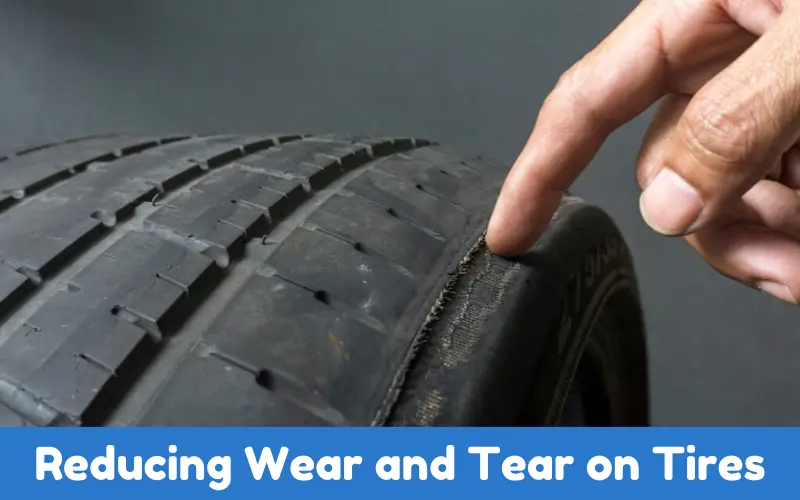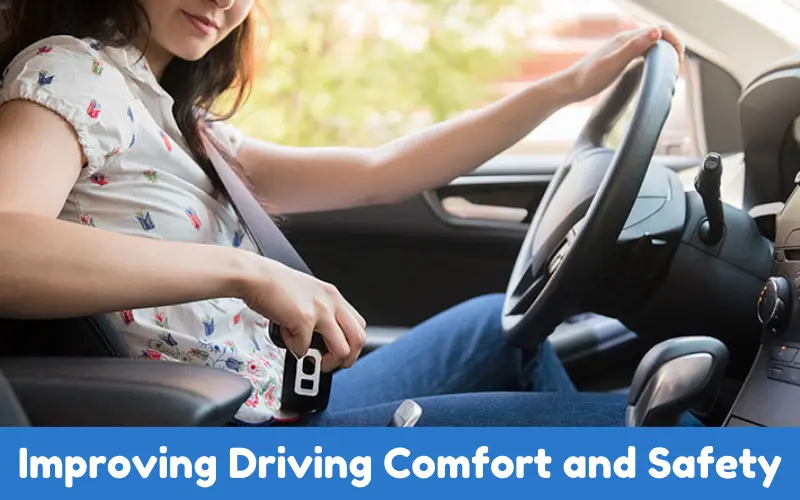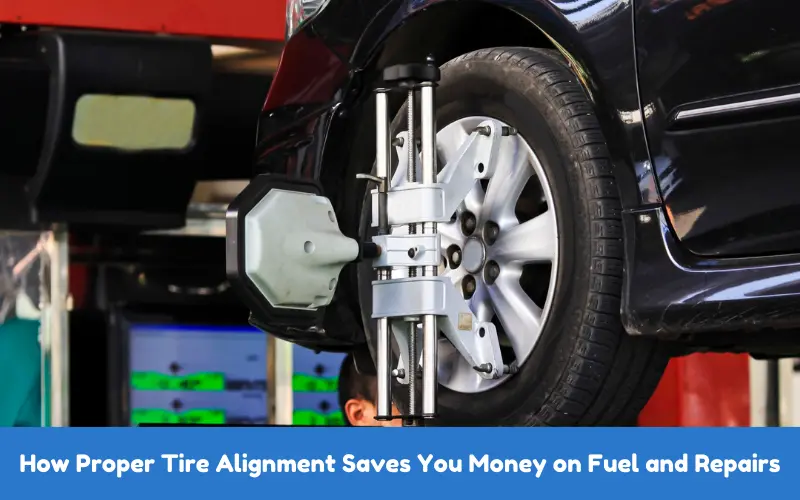Proper tire alignment is one of the most important yet overlooked tasks for car repairs. Most drivers take care of oil changes, rotations, or brake service, but tire alignment is one of the most important factors in your vehicle’s overall functionality.
It not only provides smooth operation, but it can also save you money in the long run. In this article, let’s find out how proper tire alignment can impact fuel consumption and repair costs.
Getting the alignment right can help ensure your car is healthy, save you money on fuel, and avoid the hassle of costly repairs.
Article Summary
- What is Proper Tire Alignment?
- How Tire Alignment Affects Fuel Efficiency
- Reducing Wear and Tear on Tires
- Preventing Damage To Other Components
- How Often Should You Check Your Tire Alignment?
- Saving Money on Repairs
- Environmental Benefits of Proper Tire Alignment
- The Importance of Professional Alignment Services
What is Proper Tire Alignment?
But before we get into what it is and how it will save you money, we must know what tire alignment is.
Tire alignment, or wheel alignment, refers to correcting the angle of the tires as per the manufacturer’s specs.
The act ensures that the tires make contact with the pavement correctly. Three components are present in tire alignment:
Camber: This is the direction in which the tires are bent from the front of the vehicle. The tire wears unevenly when the rim is bent too far, inward or outward.
Toe: Toe is the point where the tires touch when seen from above. If the tires point inward or outward, this can cause uneven handling and less life.
Caster: Caster angle affects the vehicle’s balance and stability. It’s the tilt of the steering point from the side of the car.
These are the parts that have to be coordinated to ensure the proper alignment of your tires. If any of these angles are not matched correctly, your car will be reduced in performance and safety.
How Tire Alignment Affects Fuel Efficiency
And, of course, fuel mileage is perhaps the biggest gain of a correctly inflated tire. The improper tire will exert unnecessarily harsh pressure on the pavement, straining your engine to push the car forward.
This resistance is analogous to running with one foot out of the correct way, where more effort is needed to continue walking.
When your car is correctly aligned, it spins with good and uniform distribution, so your engine has less work to perform. This could make a big difference in fuel efficiency.
Research has documented that incorrect alignment affects fuel consumption by as much as 10%. In the long run, this translates into considerable dollars invested in fuel that could be conserved through a straightforward alignment.
Picture traveling long distances on faulty wheels. Your car uses more fuel to drive, and your tires wear unevenly. With your tires in a tight alignment, you’ll burn less fuel, saving you money at the pump.
Reducing Wear and Tear on Tires
Good tire alignment will prolong your tires’ life, too. Misaligned tires also wear unevenly, which means some areas of the tire will break down more rapidly than others.
The camber could be, for instance, uneven, where one side of the tire will have more friction than the other and can result in premature tire replacement.
Buying tires and spending too much on changing them is expensive because they are gnarly.

Conversely, if your tires are sized properly, they wear evenly, which is when you can enjoy maximum usage. Not only does this reduce your expenditure on new tires, but it also keeps your car safe.
Tires can become very hazardous to drive on when they’re out of shape, particularly when it’s cold or icy, and you need traction.
Preventing Damage To Other Components
And it’s not just about the tires that have to get aligned. If your tires are misaligned, your suspension, steering system, and brakes will become strained.
This additional pressure eventually causes premature degradation of these components and can result in major repair.
For example, a slanting tire can make noises in the suspension system. This overwork will also ruin your shocks or struts, which keep your car level and smooth.
Repairs to suspension can cost thousands of dollars, but by taking care of your tire alignment, you can save yourself these costly expenses.
In addition to that, poor alignment will cause problems with your steering system as well. When you notice that your car’s side leans forward while driving, it might be caused by faulty tires.
Neglecting this issue could result in bigger issues in the future, like not controlling the car properly.
Again, if you fix the alignment the first time around, you will save yourself the expense of steering system repairs.
How Often Should You Check Your Tire Alignment?
Some drivers do not even know how often to adjust their tires. While there’s no single truism to this, the consensus is that alignment should be replaced every 6,000 to 10,000 miles or more every 12 months.

Yet some warning signs can mean you might need alignment earlier:
- The Vehicle Pulls To One Side: If you’re finding that your vehicle is drifting left or right on a straight road, your tires are likely out of alignment.
- Uneven Tire Wear: If one or more tires are worn out sooner than others, this may indicate bad alignment.
- Vibrations in the Steering Wheel: Flat tires make the steering wheel shake at high speeds. You might have an alignment problem if your steering wheel starts to shake during driving.
- Off-center Steering Wheel: When you drive straight, your steering wheel is not aligned, which is also a sign of alignment problems.
Saving Money on Repairs
Tire alignment also reduces the cost of other vehicle repairs. As mentioned, out of flat tires can stress different parts of the vehicle, thus necessitating a higher frequency of maintenance.
You can identify alignment issues early and save your car before they cause harm to the rest of your vehicle by spending money on regular alignments.
The average tire alignment will cost you $75 to $100, depending on your vehicle and location.
Yet the repair cost to change balding tires, service a suspension, or even replace the steering mechanism can be hundreds or thousands of dollars.
You can keep these higher costs to a minimum by splurging a bit on regular alignments. Also, brakes can be avoided with the help of proper wheel alignment.
If your tires are not squared, this will place a burden on the brakes, and your brakes can wear out prematurely.
Replacement brake pads and rotors are expensive to replace, but keeping your wheels in line can help you avoid these costs.
Environmental Benefits of Proper Tire Alignment
Not only is the alignment of the tires cost effective, but it’s also green. When your tires are properly inflated, your vehicle uses less fuel, which decreases greenhouse gas emissions.
Lowering your fuel consumption helps reduce your carbon footprint, which can make driving environmentally friendly.
In addition, when you align your tires, you save thousands of discarded tires from landfills. Tires are difficult to recycle and take hundreds of years to break down.
You save money and help the environment by making your tires wear uniformly and last longer.
Improving Driving Comfort and Safety
While fuel savings and repair costs are important, tire alignment can also be a significant contributor to comfort and safety.
Uneven tires make it difficult for your car to drive at higher speeds. This makes it risky to get hurt, especially in rain, snow, or ice.
With proper tire fitment, you’ll experience a smoother, safer driving experience with improved traction, balance, and handling.

When your tires are aligned, your vehicle will respond more precisely to steering input, lessening the chances of collisions due to inexperienced driving. This protects you and avoids having to spend on accident repair or healthcare.
Furthermore, Proper tire fitment will increase your vehicle’s brake efficiency. If your tires are set, your brakes are more effective, reducing stopping distances, which becomes essential when seconds matter.
The Importance of Professional Alignment Services
There are auto maintenance jobs that one can take care of at home. However, tire alignment is something you should never do at home.
You will need special machines to precisely calculate and adjust the angles of the tires. Doing it yourself without tools and expertise will make the wrong adjustments that could harm instead of helping.
A trained alignment technician makes sure your tires are aligned with the manufacturer’s recommendations, which improves your car’s performance and safety.
At an alignment check, an experienced mechanic will gauge camber, toe, and caster angles and make any adjustments to ensure everything is aligned correctly.
Moreover, there are usually warranties with the most professional tire alignments, giving you the assurance that it was done properly.
You can always come back to the shop for any additional adjustments if you have any problems with your alignment after the service is complete.
Conclusion
Having good tires aligned can save you thousands of dollars in fuel, maintenance and repairs, and even tire exchanges.
You save gas, prevent tire wear, and reduce injury to other car parts when you keep your tires centered.
Regular alignment checks are a very low cost way to save on your alignment in the long run. Also, proper tire alignment gives you an enjoyable and safer driving experience, reduces the chance of accidents, and enhances the driving experience.
It is also good for the environment since you save on fuel, and it prolongs the life of your tires.
So, next time you make a maintenance schedule for your car, don’t miss a tire alignment. It’s a quick and inexpensive alternative to maintaining your vehicle and preventing damage while saving money and keeping yourself safe.

